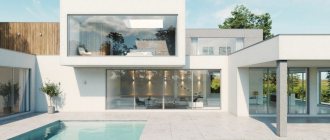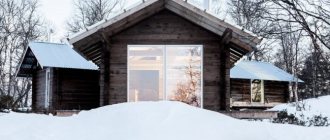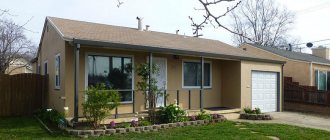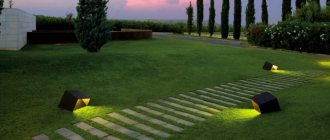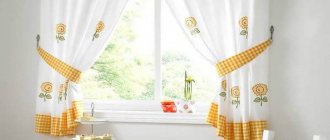Today, a huge number of materials have been created that are used to decorate the facades of houses. But brick remains the most reliable, durable and attractive. Thanks to the wide range, property owners have almost limitless possibilities in their cladding. Some choose a monochromatic finish, while others prefer to decorate the facades with materials of different shades and textures.
Types of facing bricks
Today on the market you can find a large number of varieties of facing bricks, which differ in composition and manufacturing method. At the same time, their characteristics are at a high level. The difference is only in color and appearance. The most popular options include:
- Ceramic brick. Several types of clay are used for its production. The material can be solid or have cavities inside that improve thermal insulation properties.
- Clinker. It differs from ceramic in that refractory types of clay are used for its production. Due to the complex production process, such material will be more expensive.
- Hyper-pressed. It consists of limestone, slag, waste obtained from stone processing, shell rock and cement. Its cost is relatively low.
- Silicate. It consists of quartz sand, lime, mineral additives and pigments. This material is the cheapest among other types of facing bricks. It is used extremely rarely for facade decoration, since it is able to absorb moisture, reacts poorly to severe frosts and is not resistant to ultraviolet radiation.
Advantages of brickwork
As users of our portal say, “if you conduct a survey of what you would build from if you had an unlimited budget, many will answer: brick.” But a brick wall always turns out to be the most expensive of all structures of a private house. A user of our portal with the nickname exxxxxxxx built a house in 2022, he did not draw up an estimate, but his approximate expenses at the prices at that time were as follows:
- 200,000 rubles - the foundation (but we did it ourselves);
- 110,000 rubles – floor slabs (aka the floor of the first floor);
- 500,000 rubles – box. 300,000 rubles were spent on backfill bricks, facing bricks, cement, sand, and insulation; the price of the masons’ work amounted to 200,000 rubles.
- 90,000 – timber for the roof and floor beams of the attic floor;
- 140,000 – roofing material.
Despite the fact that brick is an expensive material, people want to live in brick houses because of the main advantages of this material:
- environmental friendliness;
- high load-bearing capacity;
- durability;
- non-flammability.
Environmental friendliness is a controversial issue here. No less, and even more than the material of the walls, the composition of the air in the room is influenced by finishing materials, ventilation devices and even how household chemicals are stored. But those who want to build not just a private house, but a House, a family nest, will always choose brick.
On our website you can read an article about the features of brickwork and study the topic on the thickness of stone walls. Take a few minutes to watch a video about choosing a mortar and technology for laying facing bricks.
Choosing the shape and shade of brick
To decorate the facade of a house, it is not necessary to use rectangular bricks. To highlight door and window openings or create architectural elements on the wall, shaped materials (semicircular, two-angled, polygonal, corner, etc.) can be selected.
If we talk about the color of the material, its choice depends entirely on the design of the house and the personal preferences of the owner. Today you can increasingly find brick cladding in different colors. Along with single-color finishes, two-tone finishes are popular. This option is most typical for the classic style. Using bricks of two different shades, it is possible to create a unique exterior.
Preparatory work
When purchasing bricks for finishing, you should buy the product from one batch. Otherwise, you may end up with a completely different shade. After calculating the required amount, you should add 10-15% of the amount to protect yourself from possible fights or chips.
A very important component of masonry is the mortar. Typically, M300 or M400 cement and sifted sand are used to make the mortar.
Insulators ShF-20G- Production of plastic for finishing
How and how to caulk a timber house with your own hands: materials and step-by-step instructions
For good quality of the prepared solution, you should use water containing a minimum amount of salts. The prepared solution should resemble thick sour cream in thickness.
Before starting the construction of a brick facade, you can insulate the facade of a brick house. For this purpose, mineral wool is used.
But it is worth noting that if you decide to make insulation, then do not forget to worry about the ventilation gap. In any case, he must be present. But when installing insulation, there are some peculiarities.
Brick house styles
Facing brick is not only a very durable and practical material. Thanks to the variety of its types, it successfully competes with other trendy finishing options and is suitable for decorating any style of building.
Baroque
This design style is called one of the most noble. Majestic designs with refined curves allow you to create an atmosphere of luxury. This design option is chosen by those who want to show their individuality.
Castle style
Gothic home decoration is suitable for romantics. Its distinctive features are towering vaults, huge windows, and tall towers. All this makes the building look like a fairy-tale castle. A home in this style will be complemented by well-groomed lawns and flowering flower beds.
Classic style
For those who value tradition, decorating the facade of the house in a classic style is suitable. There should be no trendy materials here. The main design rule is the combination of correct proportions in everything.
Modern
Calm styles in the design of facades include modern. Its characteristic complex and at the same time refined lines, as well as plant patterns, make the house cozy and attractive.
High tech
Those who want to make their home look like an office space choose high-tech design. This makes it possible to combine brick with glass and metal elements, as well as bring the most daring ideas to life. The uniqueness of the house is emphasized by modern designs combined with non-standard solutions.
Photos of beautiful brick houses
Architectural styles and their movements are complex matter. For the uninitiated, understanding all the subtleties and nuances is a very, very difficult matter. Often it is not required. You need to find a photo of a brick house that you like. Based on it, you can create your own project or show what you want to an architect. Next, it’s a matter of technology to agree on the cost of the project. But remember that, most likely, you will be 35-50% over budget.
A one-story brick house in the shape of the letter L - high cost per square meter, but very cozy in the yard
This style of architecture is called “Provence”. Characteristic roofs, windows...
The whole residential complex, however, looks organic
Large two-story brick house with two open terraces with elements of Art Nouveau style
Brick goes well with stone. In the photo - a house made of white brick with wild stone trim
Ethnic trends are a way to stand out
The techniques are the same, the look is different - two directions are clearly visible - feuchtwerch and German style
This style of architecture is usually called American...
Red-brown brick, white joints and white plaster trim... a very memorable appearance
Brick house in English style. Compact, functional
If the area is large and there is no need to save space
Interesting extension. The house itself is too simple in shape...
Would you like a photo of an unusual brick house? This one is one of the most extraordinary
Another example of English brick houses
Minimalism is recognizable. No frills, concise and practical
Gray brick... gloomy, but non-standard
Who needs a small country mansion? You can use this project as a basis
Red brick of different shades and dark brown beams, a peaked roof with living spaces...
Against the background of dark brown brick, white windows and trim elements look very elegant
Painting the brick facade of a house
If you want to transform the brick facade of a building, you can paint it. In this case, both the entire wall and its individual sections can be painted. In addition to the aesthetic function, painting also has a protective function. Modern paints and varnishes are able to withstand significant temperature fluctuations, protect from wind, precipitation, ultraviolet radiation and other atmospheric influences.
Painting is carried out only 1 year after facing the facade. The sequence of work is as follows:
- the brickwork is cleaned of possible contaminants, such as fungus, mold, etc.;
- the wall is washed with soapy water;
- the washed surface should dry for 1-2 days;
- the wall is treated with a special primer;
- The selected paint and varnish composition is applied to the brickwork.
Single-layer brick walls
Walls perform two important functions in a house - they are enclosing structures that simultaneously absorb loads from floors and roofs and transfer them to the foundation. Therefore, their wall thickness is determined by both strength and thermal calculations: both the wall structure and the calculated winter temperature are taken into account.
- Solid clay brick: density 1700 kg/m3, thermal conductivity 0.81 W/(m K), water absorption by mass 12%, wall thickness at R=3.15 - 2.5 m, weight of 1 m2 of wall - 4250;
- Clay brick with voids up to 20%: density 1400 kg/m3, thermal conductivity 0.43 W/(m K), water absorption by mass 12%, wall thickness at R=3.15 - 1.35 m, weight 1 m2 of wall - 1900;
- Silicate brick: density 1800 kg/m3, thermal conductivity 0.87 W/(m K), water absorption by mass 16%, wall thickness at R=3.15 - 2.7 m, weight of 1 m2 of wall - 4860 kg;
- Porous clay brick: density 800 kg/m3, thermal conductivity 0.87 W/(m·K), water absorption by mass 18%, wall thickness at R=3.15 - 0.55 m, weight of 1 m2 of wall - 450 kg.
And internal walls are calculated based on the strength of the material, soundproofing properties, etc. The cost of construction is also very important.
Brick walls are 1.5-2 times more expensive than lightweight concrete ones.
Until the end of the eighties and 90s of the last century (by this time the global energy crisis had reached the USSR), brick houses in our country were built with traditional single-layer walls.
But the more expensive electricity, firewood and coal became, the more stringent the standards for thermal efficiency of buildings became. To meet modern standards, brick walls must be very thick:
- from ceramic solid brick - from 1.1 to 4.5 m;
- from sand-lime brick - from 1.2 to 4.8 m;
- from ceramic hollow – from 0.7 to 2.9 m;
This thickness of the walls is excessive, it is much more than is necessary for the strength of the house - this results in a waste of materials and money. The cost of building such a brick house would be extremely inhumane. But adherents of single-layer walls are attracted by the environmental friendliness and durability of brick, despite all reasonable arguments, so much so that even the estimate is not scary: this is how a “house for 100+ years” should be, a nest, the key to which will be solemnly handed over to the grandchildren.
AnatolievForumHouse Member
I feel absolutely bewildered about the “pies”. Personally, in my understanding, a brick house is a house made of uniform brick walls of 50+ cm, in no way the current “brick” houses made of 1.5 bricks of masonry, insulation and half a brick of cladding. In Europe, no one gives a guarantee of more than 15 years for these insulation materials.
A well-known example on FORUMHOUSE of a low-rise residential building with single-layer brick walls is a house built by our user with the nickname Baston1981. This is literally a merchant's mansion, only modern. The walls are 2.5 solid bricks, 64 cm thick, without external insulation.
But whether the grandchildren will be happy with such an inheritance is another question, and money will have to be spent on building and heating the house now (in our country, not everyone has the opportunity to heat with main gas). Also, houses made of solid brick require a strong foundation with a prepared soil base with good load-bearing capacity.
Taras13FORUMHOUSE Member
The cost of the wall itself is one thing, but such a wall requires a reliable foundation! Imagine the thickness of a grillage under a wall of three bricks, at least 65 cm, and if it is a fully recessed strip of 1.6 into the ground + 0.3 above it!
And masons for such work need qualified, with extensive experience, ready for complex, almost jewelry work. Judging by the reviews on our portal, it is now difficult to find such ones. Typically, such houses are built by people who may not think much about the construction budget, payment for the work of qualified specialists and heating costs. But these buildings look simply beautiful and have stood for centuries.
Methods for laying facing bricks
The durability of the material and the overall appearance of the building will depend on the chosen method of laying facing bricks. In addition to the classical method, other, more original options are often used today:
- block masonry;
- savage;
- track;
- crosspiece;
- Gothic masonry.
In addition, there are other options for laying the material, which allows you to use the most suitable option in a particular case.
Materials and tools
To build a brick house you need to acquire the following tools:
- building level;
- construction hammer;
- device for unstitching seams;
- angle grinder;
- plumb line;
- cord for level control;
- concrete mixer;
- level;
- trowel;
- shovel.
The main materials include:
- brick;
- cement;
- sand;
- plasticizer (can be replaced with liquid soap);
- plywood or boards for formwork construction;
- insulation material (extruded polystyrene foam, mineral wool, etc.);
- lime;
- reinforcing bars;
- waterproofing material (for example, roofing felt).
How to choose
When choosing white brick for your home, you should consider a number of factors:
- Interior style. White brick goes with almost all styles, but there are exceptions.
- Dimensions of the room (especially width). Photo wallpaper for a narrow corridor will be more appropriate than natural brick, the installation of which requires sacrifice in the form of priceless centimeters of space.
- Budget. Natural tiles or porcelain stoneware are more expensive than gypsum, PVC, MDF, but are not always more suitable.
- Temperature. Not all materials withstand frost and sudden climate changes equally.
- Humidity. Gypsum is not the best option for a bathroom, unlike clinker or natural brick.
The masonry can be purchased or made independently. It all depends on the budget and the characteristics of the chosen material.
How to make white bricks in the interior yourself
A simple way to make imitation brick:
- Take thick foam and thick cardboard.
- Cut out templates from cardboard, and use foam “bricks” on them.
- Cut the resulting brick widthwise into two halves.
- Remove the chamfer around the perimeter of each brick.
- Take liquid nails and glue the foam to a previously prepared surface: markings on chipboard, plywood, in a checkerboard pattern.
- Apply 2 layers of acrylic paint and varnish.
Wall decoration with white brick: pros and cons
White brick is used quite often in the interior. It can be combined with the design of almost any room, and therefore will be an excellent solution for implementing many stylistic ideas. A white brick wall has its pros and cons. They allow you to understand whether it will be possible to implement design ideas using this element.
| Pros of white brick | Cons of white brick |
| 1. White elements in interior design visually increase the space. 2. With the help of white brick in the interior you can revive almost any style. 3. White brick masonry is available in different price categories and from different materials. 4. Suitable for bedroom, kitchen, hallway, living room and many other rooms. 5. Dense masonry provides good sound insulation. 6. Visually smoothes the uneven surface of the wall. | 1. A room with such renovation requires regular cleaning. 2. A panel made of gypsum and similar materials is afraid of moisture. 4. Professional finishing from natural materials will not be cheap. |
What goes with white brick in the interior?
In the interior of an apartment or country house, white brickwork is appropriate almost everywhere. What material goes best with:
- wooden cabinets, furniture, dishes;
- metal tables, racks;
- concrete plates;
- mirrors of standard shapes;
- wallpaper or plain putty;
- home flowers in plain pots and cache-pots.


